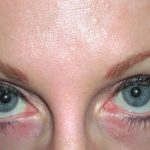1. What is the difference between Botox and fillers since both are injected?
Because both Botox and fillers are ‘injectable’ and are used for cosmetic facial folds and wrinkles, they are often confused. But their chemistry and modes of action are completely different. They are best understood in appreciating the difference between static vs. dynamic wrinkling. Static wrinkles and folds are those that are present when your face is expressionless. Dynamic wrinkles are those that appear or get deeper when we have facial expressions. When we are young, we only have dynamic wrinkles. But as we age, some of those dynamic wrinkles become static ones as well. Botox and Dysport are muscle weakening agents that treat dynamic wrinkles. Fillers are used to plump up or soften static wrinkles.

In some cases, the two may be used together to get the benefits of both for a particularly problematic facial fold such as very deep vertical furrows between the eyebrows.
2. What are injectable fillers most commonly used?
If you divide the face in hemispheres, Botox and Dysport are primarily used as a ‘northern’ procedure (forehead and eyes) while injectable fillers are a ‘southern’ procedure. (around the mouth and cheek-lip folds)
3. There are lots of injectable fillers that I see advertised, but which is the best?

4. Can injectable fillers be used for wrinkles?
While many think that fillers can be used to treat wrinkles, this is a bit misleading. Wrinkles tend to be more superficial lines in the skin which makes injection into them difficult. Most fillers are placed just under the skin. As a result, they work best for the lips and facial areas such as the nasolabial or glabellar furrows…folds of the skin, not wrinkles. This does not mean that fillers can not be used for some wrinkles, just not very fine ones.
5. Is it painful to have a filler treatment?
Being stuck with a needle is not a pain-free experience. Some facial areas are more sensitive than others, such as the lips. Some form of anesthesia is helpful for all injectable filler treatments. Topical creams are somewhat helpful but I prefer local anesthetic nerve blocks, particularly around the mouth. Having as comfortable as an injectable experience as possible is important since long-term maintenance of the results require ongoing injection sessions.
6. What is the recovery after being treated with injectable fillers?
The beauty of injectable facial treatments is that there is usually no recovery. Once can walk out without having any visible signs that something was done. Rarely is there any noticeable swelling or bruising. In my Indianapolis plastic surgery practice, patients will leave still being numb from the injections and will feel swollen, when in fact, they are not. In those few patients where small amounts of bruising may occur, it will not usually appear for hours or a day later.
7. How long does the effects of a filler treatment last?
That will depend on what type of injectable filler is used. Fillers have quite variable lengths of persistence. Some last but three or four months, while a few may last up to a year.
Dr. Barry Eppley
Indianapolis, Indiana



